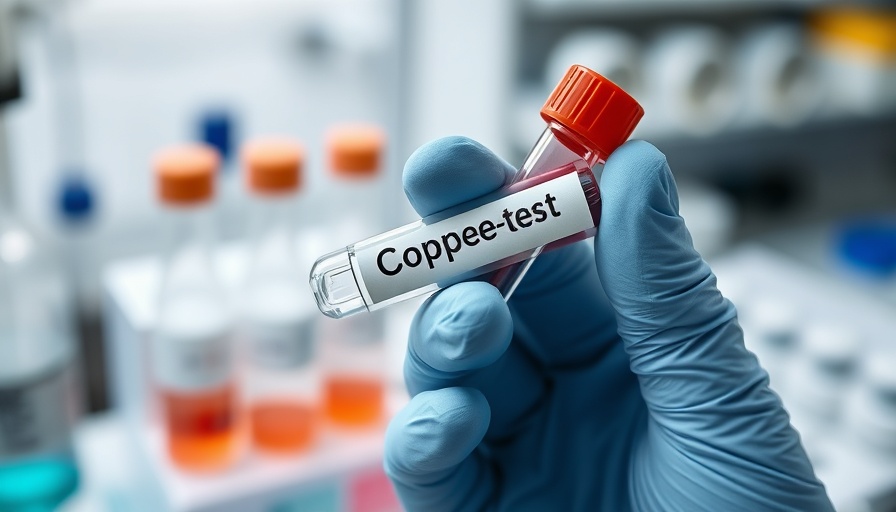
The Hidden Dangers of Copper Storage Disease in Pets
As a loving pet owner, you do everything possible to ensure a happy and healthy life for your furry friend. But imagine a silent threat lurking in their bodies, something that could go unnoticed until the damage is irreversible. This is the unsettling reality with Copper Storage Disease (CSD), a liver condition that is becoming increasingly recognized among pet owners.
What is Copper Storage Disease?
Copper is an essential trace mineral that plays a vital role in maintaining your pet's health. However, for dogs and cats diagnosed with Copper Storage Disease, their liver fails to excrete excess copper properly, leading to a toxic accumulation. This accumulation can result in inflammation and eventually irreparable liver damage.
Subtle Symptoms: The Silent Indicator of Danger
The symptoms of CSD often start off as vague and may even be mistaken for more common health issues. Pets might display mild gastrointestinal upsets, lack of appetite, or behavioral changes that many owners chalk up to stress or fatigue. However, these early warning signs are crucial. By the time a pet exhibits pronounced symptoms like jaundice or extreme lethargy, the disease may have already taken hold irreversibly.
The Rising Recognition of CSD
Once considered rare, Copper Storage Disease is now being diagnosed with alarming frequency. Various dog breeds, including Labradors, Dobermans, and Bedlington Terriers, are at increased risk. Interestingly, some felines are also afflicted, exhibiting a form of CSD known as primary copper-associated hepatopathy, which mirrors Wilson’s disease in humans. Understanding the genetic predispositions of your pet can contribute greatly to maintaining their health.
Diagnosis: Catching It Early
Diagnosing CSD requires careful and thorough veterinary evaluations, including blood work, imaging, and often, liver biopsies. Recognition of the disease in the early stages can make a significant difference in treatment outcomes. Instead of waiting for serious symptoms to arise, proactive owners should consult their veterinarians when they notice any unusual behavior or health concerns.
Essential Management Strategies for Pet Owners
Managing Copper Storage Disease often necessitates a multi-faceted approach. Dietary modifications, such as implementing a copper-restricted diet are vital. Chelation therapy and zinc supplementation may also be recommended to help remove excess copper from the body. However, ongoing care and monitoring are crucial for offering your pet a longer, healthier life.
Why This Information Matters
Understanding Copper Storage Disease and its implications is not just for veterinarians; it is equally essential for pet owners. As our furry family members rely on us for care, knowing the warning signs and potential risks allows us to make informed decisions about their health. Furthermore, being aware means encouraging fellow pet owners to monitor for related symptoms, creating a community of vigilant caregivers.
As this disease continues to rise, proactive education and awareness form the frontline defenses in safeguarding the lives of beloved pets.
Don't Wait: Take Action for Your Pet's Health!
If you notice any changes in your pet's behavior or health, prioritize a visit to your veterinarian. Early detection and intervention can be life-saving and lead to a much better prognosis for Copper Storage Disease. Don't overlook your pet's subtle signals — they may be trying to tell you that something is wrong.
 Add Row
Add Row  Add
Add 




Write A Comment